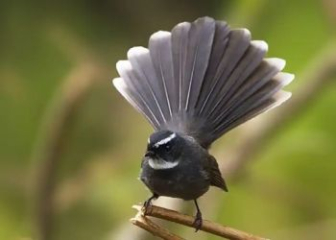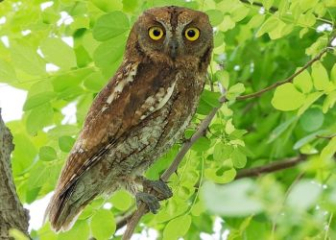Red-whiskered bulbul - Ignition technique to help birds sing best
Blog | by
The red-whiskered bulbul (Pycnonotus jocosus), a popular pet bird in Vietnam, has an impressive appearance with an upside-down crest and a beautiful, diverse singing voice.
The red-whiskered bulbul (scientific name Pycnonotus jocosus) is a very familiar bird to bird lovers in Vietnam. They not only have a graceful appearance with a characteristic upside-down crest, but also possess a chirping voice with a variety of tones.
So do you know the origin, habits or how to train the starling to sing? If not, let's find out the details with nicebirds through the article below!
Information about the bird :
|
Scientific name |
Pycnonotus jocosus |
|
Common name |
Crested myna |
|
Set |
Passeriformes - Sparrows |
|
Surname |
Pycnonotidae - Red-whiskered Bulbuls |
|
Source |
Asia |
|
Size |
20 - 23 cm |
|
Lifespan |
8 - 10 years |
Origin and meaning of the Starling bird in the bird world

The starling is a very popular pet bird in Vietnam.
The red-whiskered bulbul (scientific name Pycnonotus jocosus) originates from Asia, common in some countries such as Vietnam, India, Thailand, Laos, Cambodia, Malaysia, southern China, Myanmar, Nepal...
In Vietnam, red-whiskered bulbuls are distributed throughout the country, with some typical regions such as:
- Northern red-whiskered bulbul: Small body, clear, sharp voice.
- Central region crested myna: Beautiful feather color, clear singing voice, many rare lines.
- Southern crested myna: Big bird, white cheeks, tame.
Initially, the red-whiskered bulbul was a wild bird that lived only in dense forests. However, thanks to its beautiful singing voice and appearance, people captured and domesticated it.
The red-whiskered bulbul is also a bird with many cultural meanings and plays an important role in the lives of Vietnamese people. They often appear in poems, folk songs, folk games and there are many "red-whiskered bulbul singing competitions" organized and attracting a large number of participants.
Species of the red-whiskered bulbul
According to scientific research, there are currently nine recognized subspecies of mynahs, specifically as follows:
|
Subspecies name |
Origin, distribution |
Characteristic |
|
P. j. fuscicaudatus |
Western and Central India |
Has breast band, no white part on tail |
|
P. j. abuensis |
Northwest India |
Pale color, broken breast, no white border on tail |
|
P. j. pyrrhotis |
Northern India, Nepal |
Pale colour, white-tipped tail, distinct breast band |
|
P.j. emeria |
Eastern India to southwestern Thailand |
Warm brown, thin beak, long crest |
|
P. J. Whisperri |
Andaman Islands |
Warm brown feathers, thick beak, shorter than emeria |
|
Chinese red-whiskered bulbul (P. j. monticola) |
South China, North Myanmar |
The head is darker than pyrrhotis |
|
P. j. jocosus |
Southeast China |
|
|
P. j. hainanensis |
Hainan Island, China |
|
|
P. J. Pattani |
Southern Myanmar |
Appearance of the Red-whiskered Bulbul
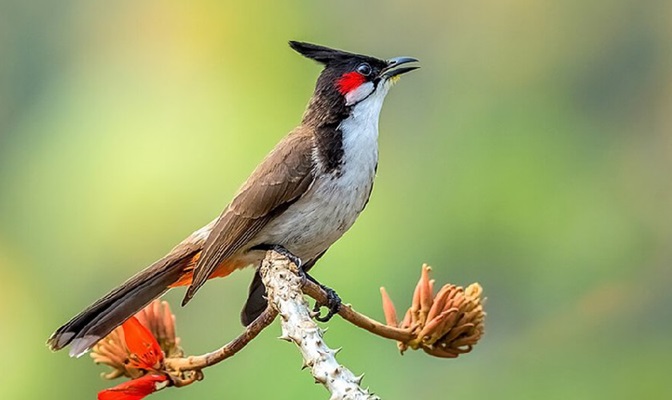
Impressive appearance of a starling bird.
In addition to having a beautiful singing voice, the red-whiskered bulbul also has a special appearance, standing out in the bird world. Find out more right here!
Size and shape :
- Length : About 20 - 23 cm, from the top of the head to the tip of the tail.
- Body : Slim, slender.
- Standing posture : Stand straight and confident.
Head features :
- Erect crest : This is the most special feature of the crested myna. It is black, erect and pointed, looking very majestic.
- White cheeks : The hair on both sides of the cheeks is characteristically white.
- Eyes : small, round, brown or bright red.
- Head and neck fur : Dark black, forming a unique black bib.
Body features :
- Back, wings, tail : Grayish brown or light brown, some individuals have a slight red tinge.
- Belly and chest : White or light gray.
- Anus : Has bright red or orange-red streaks, also known as “fire butt”.
- Tail : Long, forked, often with white edge.
- Legs : Tall, slender, dark grey in colour, sharp nails.
In addition to the traditional coat colors mentioned above, there are also some special color variations as follows:
- Albino crested myna: All white, red eyes
- White-headed Myna: The white head is very rare.
- White-rumped myna: Has a white patch on its back that looks like a saddle.
Behavior of the Red-whiskered Bulbul
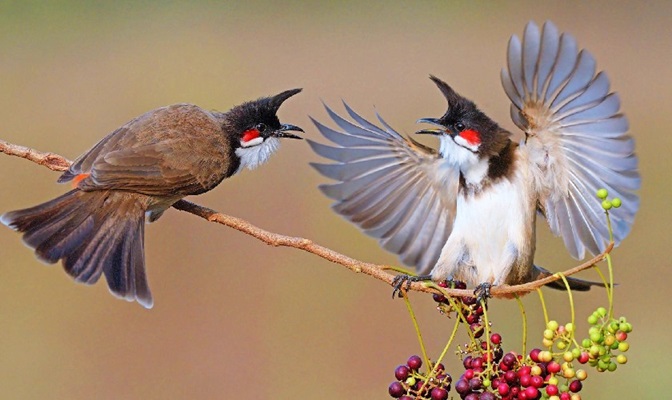
Two starlings are "hissing" at each other.
Below are the most typical habits and behaviors of the crested myna, helping you easily understand and grasp this bird species. Let's find out now!
Expressing emotions by raising the crest
The red-whiskered bulbul has a very special way of expressing its emotional state: the crest of feathers on its head stands upright when excited, alert or fighting.
Voice is very diverse
Unlike other birds that have only one characteristic song, the red-whiskered bulbul can sing in many different tones, it can be a chirping sound or a clear, long, resonant song,...
We can also guess their emotions through their singing. They sing softly when they feel peaceful, sing loudly when they want to compete, fight,...
Competitive
The crested myna is a very competitive bird, especially with other birds of the same species. They always like to show off their singing voice by "competing" to show off their loud singing voice, along with raising their crests and opening their eyes wide.
They are also highly territorial, fiercely defending their territory and not allowing any other bird to encroach.
Curious, love to explore
Crested mynahs are curious by nature, they like to move around their living area to observe and explore everything around them.
Is an omnivorous bird
The crested myna is an omnivorous bird. They can forage flexibly from trees to the ground. They can eat ripe fruit or hunt insects.
Likes bathing and sunbathing
The crested myna is a clean bird. They often bathe in water to clean their feathers and sunbathe to kill bacteria and improve their health.
Ignition technique helps starlings sing well
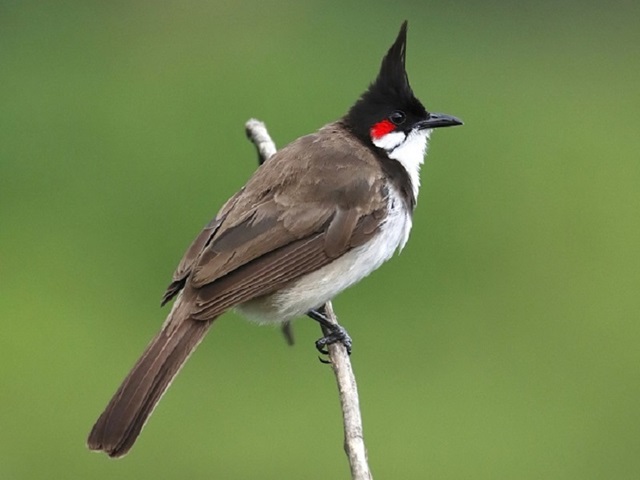
The crested myna needs to practice singing every day to sing with the most passion.
If you want to raise a starling with the best and most impressive singing voice, please refer to some basic techniques shared below!
Choose good breed birds
If you want to own a bird with a beautiful and impressive singing voice, the first key condition is that you need to choose a good breeding bird. A good breeding bird will meet the following conditions:
- Priority is given to male birds with balanced body, high crest, smooth feathers, bright, alert eyes.
- Choose a bird with a ready singing voice.
- Do not choose old birds, sick birds or birds that are too young.
Prepare a suitable bird cage
After choosing a good breed, you need to prepare a suitable cage and bird-raising environment that meets the following basic conditions:
- Spacious and airy cage.
- Choose a cage made of wood or bamboo to make the bird feel more familiar and comfortable.
- The cage should have plenty of perches, water trays, and food trays.
- Place the cage in a quiet place, away from drafts and direct sunlight.
- If possible, place the cage where you can see lots of trees so the bird can feel close to nature and hear other birds.
Balanced diet
The bird can only sing well when given enough nutrients and a variety of ingredients. Some recommended foods are as follows:
- Main food : Fresh worms, grasshoppers, crickets, specialized pellets
- Supplemental foods : Bananas, apples, pears, pennywort, fish mint,...
- Clean water : Need to provide enough, change daily, periodically should give more mineral water containing vitamins.
- Feeding frequency : Can be fed several times a day with appropriate amount of food.
Practice singing every day
An important factor that helps the bird sing well is to practice its voice every day. There are important steps as follows:
Listen to the sample singing and imitate :
- Let your bird listen to a recording of another bird's beautiful song every day, for at least 15 - 30 minutes.
- Choose from a variety of sample voices.
Stimulate birds to sing :
- After listening to the sample song, you should take the bird to a quiet area so that it can concentrate on singing again.
- There should be a reward after each bird sings to stimulate the spirit.
- Do not stress or force the bird to sing excessively.
Create an environment that stimulates singing :
- Because starlings love to "compete", you can put a mirror in the cage to make them think they are competing with an "opponent", thereby increasing their singing inspiration.
- Place the bird cage in the wild, where there are many other bird songs, to stimulate them to sing along.
Reasonable practice time :
- You should only practice singing for 1 - 2 hours a day, and can divide it into several small sessions so that the bird does not feel overwhelmed.
- Alternate between rest, sunbathing, and bathing.
Health care for crested mynahs
Red-whiskered bulbuls can only sing well when they are in good health. Therefore, taking care of the bird's health is also an important key, please note the following!
- Clean cages and pens daily, remove leftover food, and clean the litter tray to maintain a clean and hygienic living environment.
- Monitor and check the health of your bird regularly to detect any unusual signs early and treat them promptly.
- Supplement vitamins and digestive enzymes as directed by your veterinarian.
Price list of starlings
Currently, in the Vietnamese bird market, the price of starlings is quite cheap, only from a few hundred to a few million. If you want to learn more, please refer to the following price list!
|
Species of bird |
Reference price (VND/piece) |
Note |
|
Young crested myna (wild) |
150,000 - 500,000 |
Untamed bird |
|
Pure-voiced crested myna |
800,000 - 1,800,000 |
The bird is tame, the song is stable |
|
Crested myna fighting |
Over 2,000,000 |
Purebred, experienced in competition, good singing voice |
|
Mutant Crested Myna |
5,000,000 - 15,000,000 |
Crested mynahs have mutated colors such as albino, yellow, gray,... |
Note :
- The above price is for reference only because the price of the bird will change depending on the time.
- Depending on the origin of the bird, the price is also different.
- You should choose a reputable store to ensure the origin and quality of the bird.
Questions and answers about starlings?
How long does a starling last?
On average, starlings can live 8 - 10 years if cared for in optimal conditions.
Are crested mynahs easy to raise?
The crested myna is a fairly easy bird to raise, not requiring much care or feeding because it is adaptable and omnivorous.
Where to buy cheap starlings?
You can buy starlings at reputable bird shops, on e-commerce sites such as Cho Tot, Shopee or bird groups on social networks.
Beautiful bird pictures
If you want to see more beautiful pictures of the bird, don't miss the collection below, guaranteed to be beautiful, sharp and unique, let's admire it now!
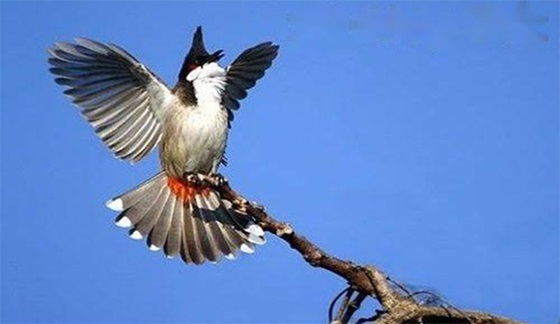
Image of a red-whiskered bulbul spreading its wings.
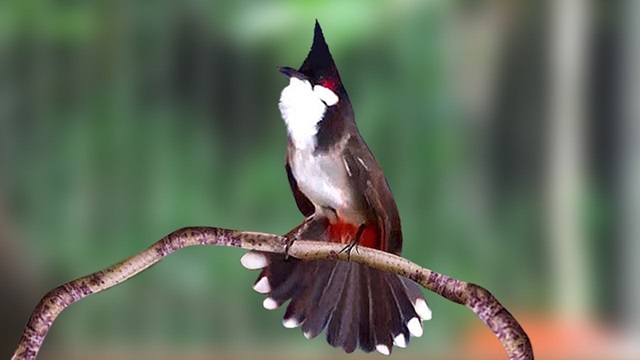
A beautiful red-whiskered bulbul spreading its tail.
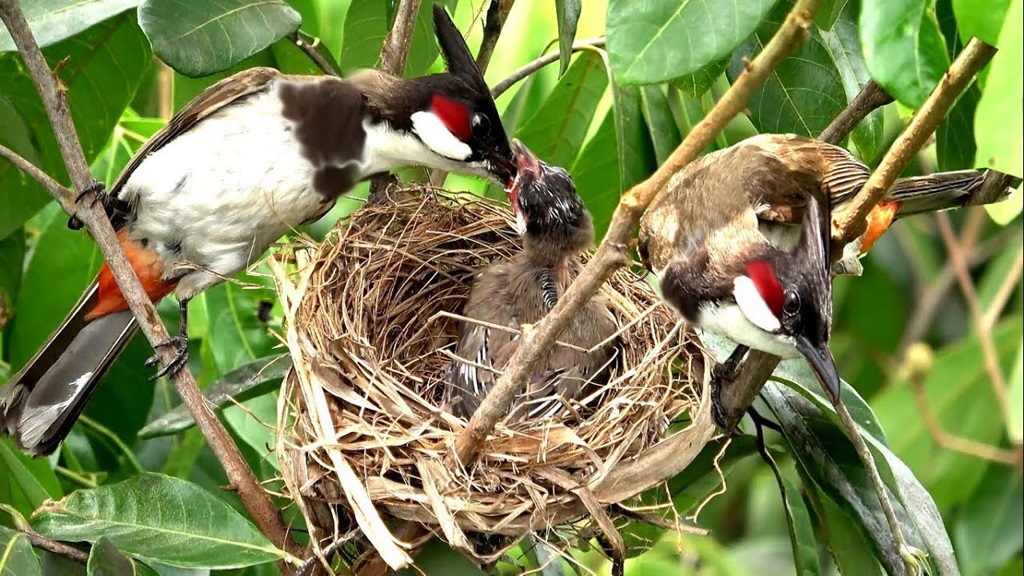
Image of parent starlings taking care of their chicks.
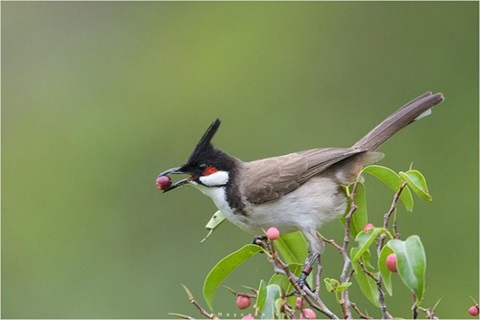
A starling is eating fresh fruit.
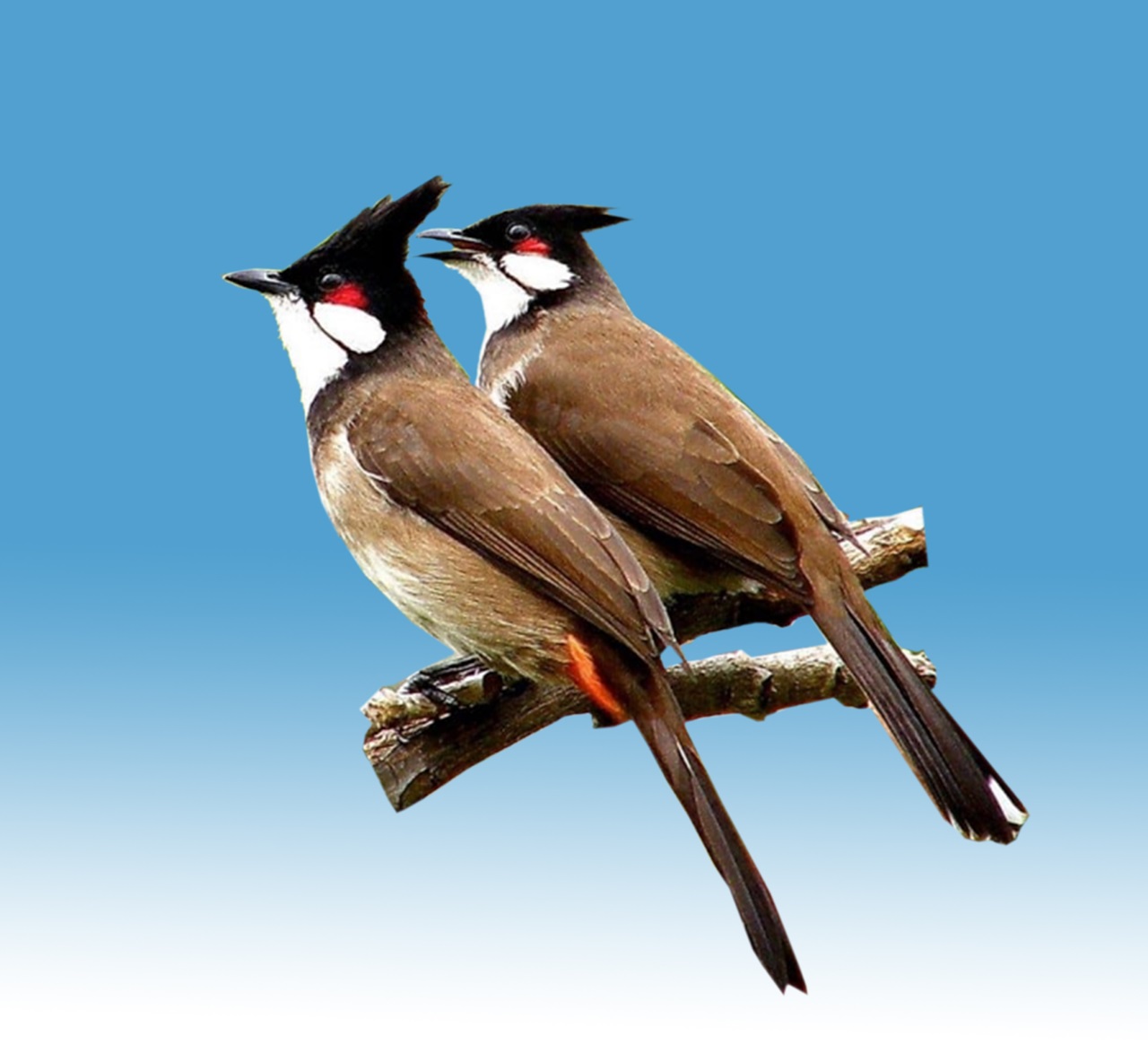
Image of a pair of red-whiskered bulbuls perched next to each other.
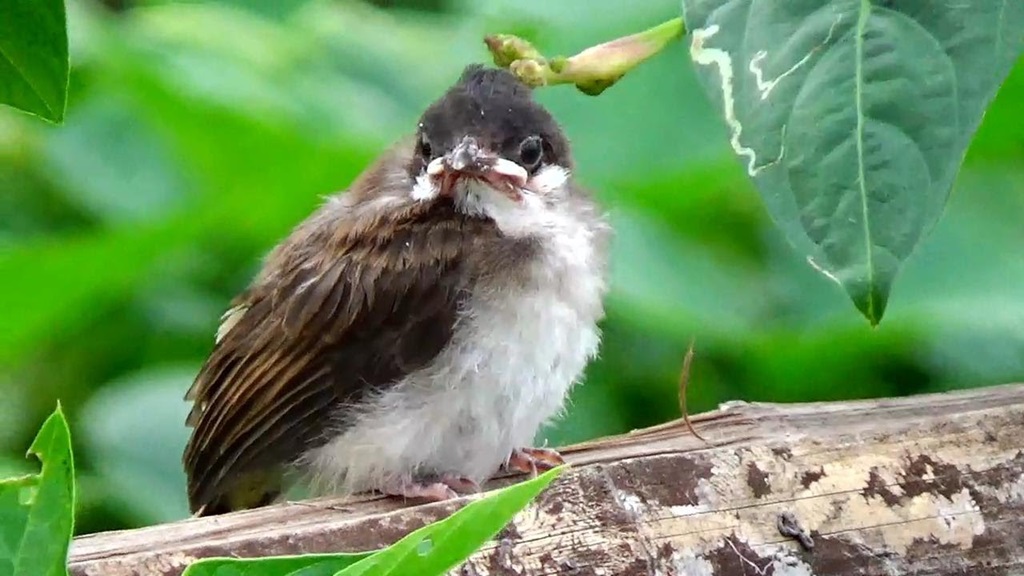
A super cute baby starling.
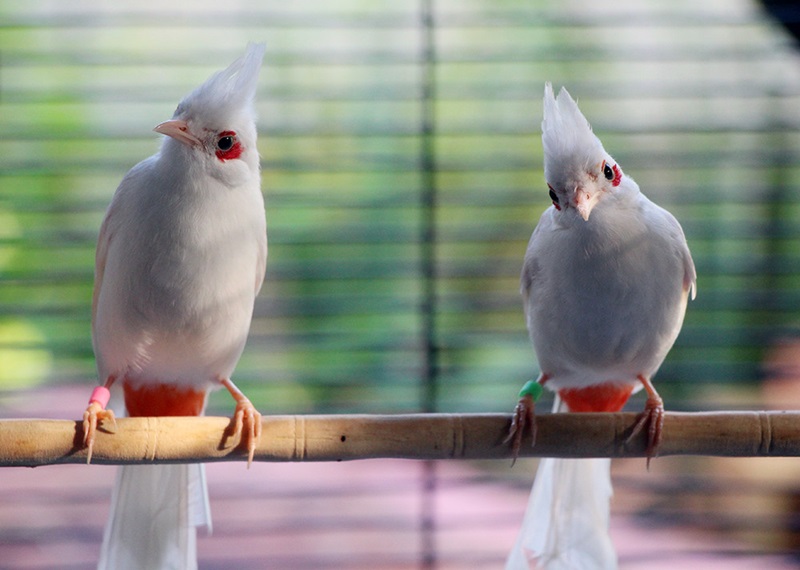
Albino crested myna with white feathers and super rare red eyes.
Through the article that nicebirds.net shared above, it can be seen that the starling is not only a beautiful and easy-to-raise bird, but it also has a special singing voice, bringing joy and relaxation to the owner. If you love birds and want to start with a bird that is easy to get acquainted with and sings well, the starling is not a bad suggestion!
Don't forget to visit our Blog section to discover more useful knowledge about pet birds, the most detailed bird care and training techniques!

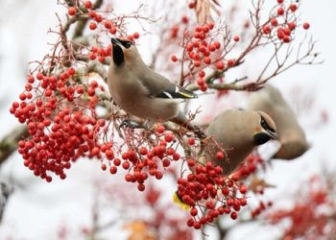

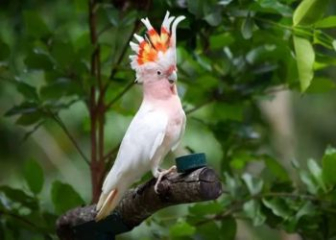
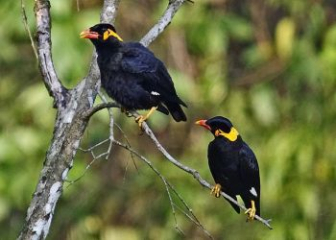
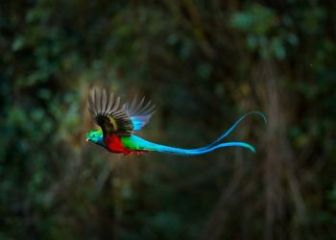





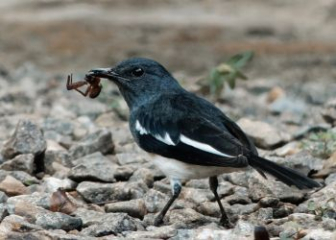
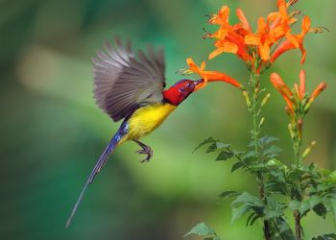


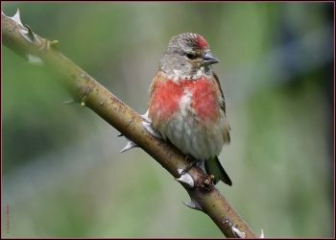
_350x250.jpg)
